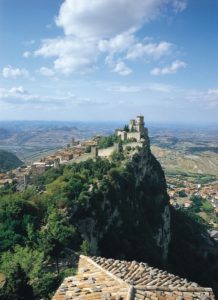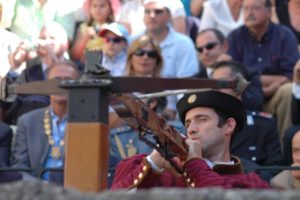Receive our newsletter
Your e-mail address is only used to send you our newsletter and information about the activities of Strasbourg Europe. You can always use the unsubscribe link included in the newsletter.
Palazzo nocturne © Permanent Representation of San Marino to the Council of Europe

Picture: Medieval Festival
© La Fondazione San Marino
Cassa di Risparmio della Repubblica di San Marino-Sums
«Istanza d’Arengo »
Crossbow
 Crossbow is a highly popular national sport in San Marino. Each year, the nine castelli of the country compete in a national crossbow tournament.
Crossbow is a highly popular national sport in San Marino. Each year, the nine castelli of the country compete in a national crossbow tournament.
© Permanent Representation of San Marino to the Council of Europe
Stamps and Coins
Sources of texts: www.visitsanmarino.com and Permanent Representation of San Marino to the Council of Europe
Your e-mail address is only used to send you our newsletter and information about the activities of Strasbourg Europe. You can always use the unsubscribe link included in the newsletter.
Information Center
on the European Institutions (CIIE)
Europe Direct Information Center
All rights reserved to the CIIE
Non-profit organization
Mailing address
1 allée Kastner
67000 Strasbourg
France
Visitors entrance
8 rue Boecklin
67000 Strasbourg
France
To provide the best experiences, we use technologies such as cookies to store and/or access device information. Consenting to these technologies will allow us to process data such as browsing behavior or unique IDs on this site. Failure to consent or withdrawing consent may adversely affect certain features and functions.
Europe Direct network
The CIIE team
Contact information and opening hours
Lieu d’Europe
The CIIE offices
Contact us
CIIE’s Documentation Centre & Publications
School presentations & Activities
Borrowing of learning material
Activities for the general public
Institutions of the European Union in Strasbourg
Institutions Under the Authority of the Council of Europe
Other European Organisations in Strasbourg
Sessions of the European institutions in Strasbourg
Visiting the institutions
Map of the European district of Strasbourg
Institutions in Strasbourg in photos
Discover artistic Europe
National holidays of the member states of the Council of Europe